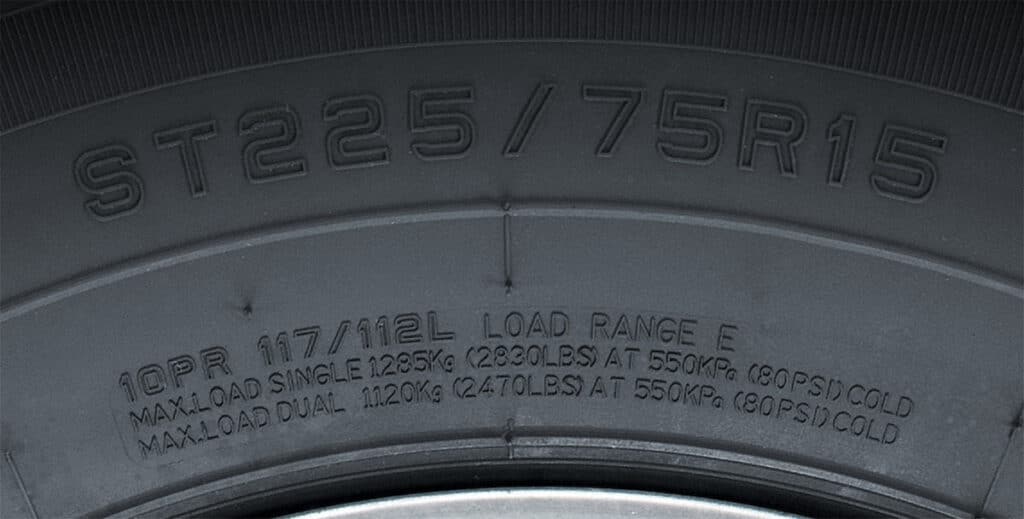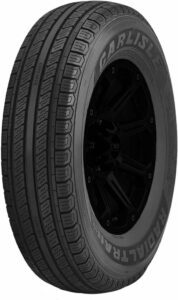Embarking on an RV journey is thrilling, but there’s a lot of groundwork to be done beforehand. Among the most pivotal decisions to make is selecting the correct trailer tires, especially the load rating. This comprehensive guide is aimed at simplifying this process for you.
Understanding Trailer Tires
Tires aren’t just round and rubbery; they’re a product of meticulous engineering and design. Specifically, when it comes to trailer tires, understanding the load rating becomes essential. But what exactly is it?
Load rating is a measure of the maximum weight a tire can safely support. And while we may get engrossed in brand names or patterns on tires, the load rating is what ensures safety during the journey.
Tire manufacturers often print a code on the tire sidewall that indicates its load rating. These are usually represented by letters, starting from L (for Light) going up to D (for Heavy Duty). This shorthand provides a clear indication of the tire’s weight-bearing capacity.
The Critical Nature of Load Ratings
Ignoring the tire’s load rating can lead to significant consequences:
- Safety Hazards: A tire that’s overloaded is at a higher risk of failing. Imagine a tire blowout at highway speeds; it’s a peril not just for you but for everyone on the road.
- Increased Wear: When tires bear more weight than they’re designed for, they wear out faster. This not only translates to more frequent tire replacements but also leads to higher maintenance costs.
- Poor Fuel Efficiency: A mismatch between the tire load rating and the trailer’s weight can result in reduced fuel efficiency. Over time, this means burning a hole in your pocket due to increased fuel costs.
How to Choose the Correct Load Rating
Selecting the right load rating for your trailer tires requires precision, understanding, and a bit of research. Here’s a detailed breakdown:
1. Calculate the Gross Trailer Weight (GTW):
Dry Weight: Start by finding out the ‘Dry Weight’ or ‘Unloaded Vehicle Weight (UVW)’ of your trailer. This is the weight of the trailer without any additions – no cargo, water, gas, or accessories. This weight can often be found in the trailer’s user manual or on a sticker located on the inside of the trailer’s door.
Add Payload: Next, consider everything you’ll be adding to your trailer. This includes personal belongings, food, water (remember, water weighs about 8.34 pounds per gallon), fuel, and any other items. It’s easy to underestimate this, so consider using a household scale for smaller items and aggregate their total weight.

2. Understand the Gross Axle Weight Rating (GAWR):
This is the maximum distributed weight that may be supported by an axle of the trailer. It’s crucial to ensure that the weight on each axle (when the trailer is fully loaded) doesn’t exceed this rating. Like the dry weight, GAWR is typically mentioned in the user manual or on the trailer itself.
3. Factor in a Safety Margin:
It’s good practice to choose a tire that can handle more than your calculated weight. A common rule of thumb is to add a 10-15% safety margin. So, if your total weight comes to 1,000 pounds, aim for a tire that can handle at least 1,100 to 1,150 pounds.
4. Check the Manufacturer’s Specifications:
Every tire has its load rating clearly mentioned. However, to ensure you’re getting the correct information:
Inspect the Tire Sidewall: Tires have a series of alphanumeric codes on their sidewalls. These aren’t just random letters and numbers; they provide essential information about the tire’s capabilities.

Consult the User Manual: Many tire manufacturers include detailed load rating tables in their product manuals. If you’ve misplaced your physical copy, these manuals are often available online on the manufacturer’s official website.
Visit the Manufacturer’s Website: Many tire manufacturers have dedicated sections on their websites where you can input your vehicle’s details to get tire recommendations.
Contact Customer Support: If in doubt, get in touch directly with the tire manufacturer. Their technical or customer support teams are usually well-equipped to guide you.
5. Don’t Forget the Terrain:
While weight is a crucial determinant, the kind of roads and terrains you’ll be navigating also matters. If your journey involves rough roads, gravel, or off-roading, the additional stress on the tires might demand a higher load rating.
Choosing the Best Trailer Tires
It’s worth noting that while the focus here has been majorly on load ratings, the broader picture of selecting trailer tires encompasses more aspects. Always lean towards well-established brands renowned for their durability. Going through reviews, comparing warranties, and even seeking recommendations are all part of a thorough trailer tire selection process. Remember, it’s not just about saving some money upfront, but also about the safety, longevity, and overall performance. Investing in quality always pays off in the long haul.
My personal favorite? The Carlisle Radial Trail HD series. I’ve run them on all of my trailers for 8+ years with zero blowouts. They wear like iron and won’t break the bank.

The Journey of Trailer Tires
In the past, any tire was deemed good enough for trailers. However, as trailers evolved, so did the requirements for their tires. This history underlines the importance of purpose-built tires that cater specifically to trailers’ unique needs. With clear load rating indicators, today’s tires offer peace of mind and a promise of safety.
Conclusion
The journey with your trailer begins much before you start the engine. It starts with the right preparations, and selecting the appropriate load rating for your tires is foundational to this. It’s more than just a specification; it’s about ensuring every journey is as smooth and safe as possible.
Stay tuned as we delve further into other aspects of trailer maintenance and preparation in our upcoming articles. Safe travels!